A Comprehensive Guide to Understanding the Fundamentals of DeFi
Here, we give you a comprehensive overview of exactly what DeFi is and the promises it holds for a more financially independent future.
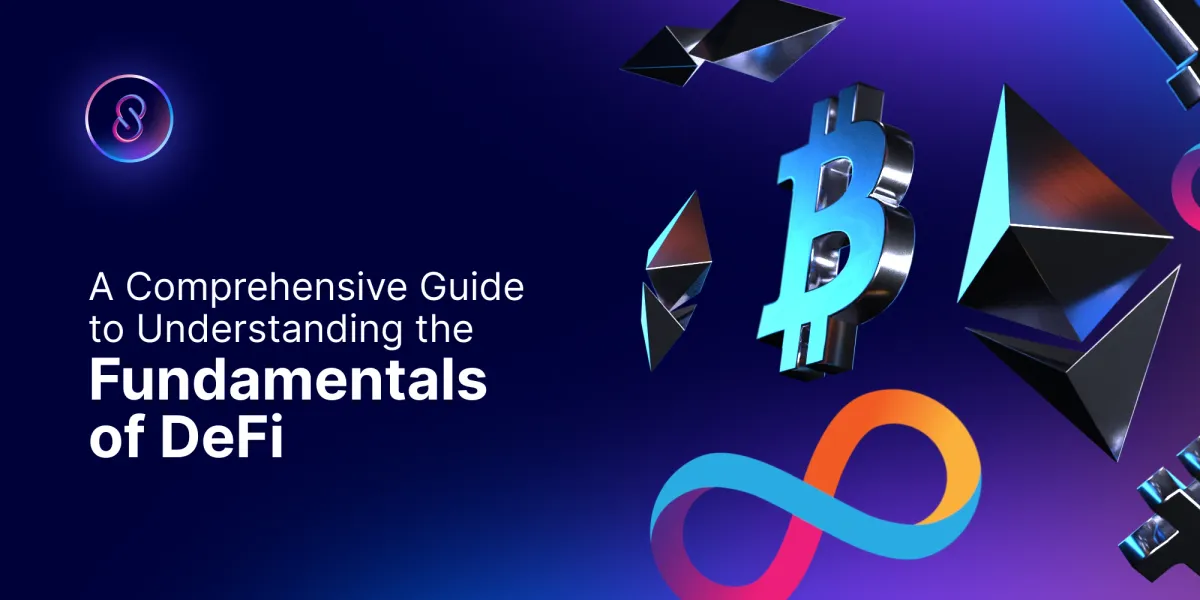
Decentralized finance, or DeFi, is a revolutionary concept in the world of finance that is powered by blockchain technology.DeFi is an umbrella term that refers to a range of financial applications that operate on a decentralized blockchain network. These applications enable users to access financial services in a trustless, permissionless, and transparent manner, without the need for intermediaries such as banks, brokers, or other financial institutions.
What is DeFi and How Does it Work?
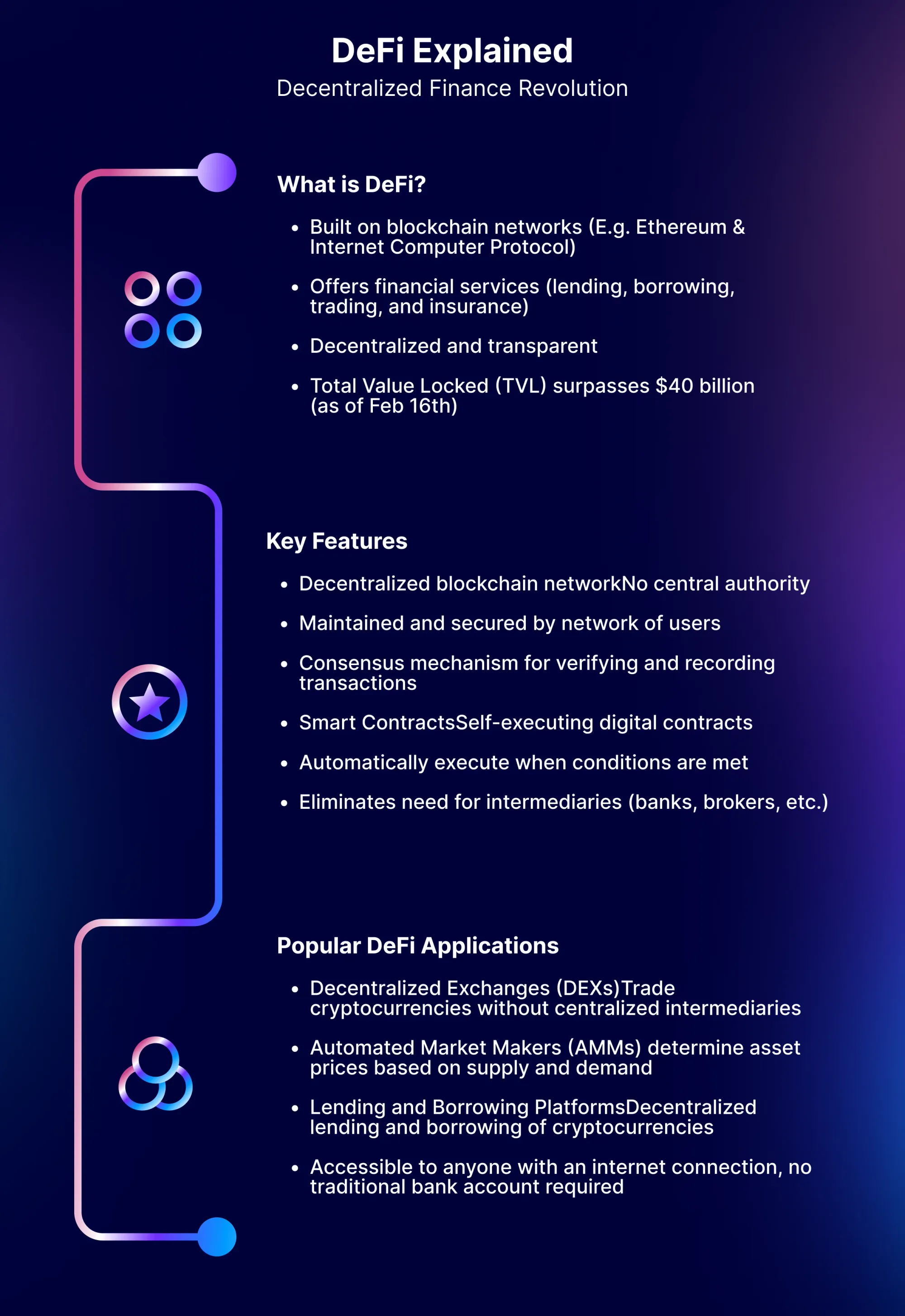
DeFi protocols are built on top of blockchain networks such as Ethereum & Internet Computer Protocol, and they are primarily designed to offer financial services such as lending, borrowing, trading, and insurance in a decentralized and transparent manner. The DeFi market has grown significantly recently, with the total value locked (TVL) in DeFi protocols surpassing $40 billion as of Feb 16th.
It operates on a decentralized blockchain network, which means that there is no central authority governing the system. Instead, the network is maintained and secured by a network of users who collectively participate in the network's operation. This is achieved through a consensus mechanism, ensuring all transactions are verified and recorded on the blockchain.
One of the key features of DeFi is the use of smart contracts, which are self-executing digital contracts that automatically execute when certain conditions are met. Smart contracts are a key component of DeFi platforms, as they enable the creation of decentralized financial applications that operate autonomously, without the need for intermediaries such as banks, brokers, or other financial institutions.
The most popular DeFi applications is decentralized exchanges (DEXs), which enable users to trade cryptocurrencies without the need for a centralized intermediary. DEXs use automated market makers (AMMs) to determine the prices of assets, which are determined by supply and demand. Other popular DeFi applications include lending and borrowing platforms, which allow users to lend and borrow cryptocurrencies in a decentralized manner. These services are accessible to anyone with an internet connection, and users can participate in these platforms without the need for a traditional bank account or financial intermediary.
Why are People Drawn to Defi?
The benefits of DeFi are numerous. Let's look at them briefly
Accessibility and Inclusivity
One of the most significant advantages of DeFi is its accessibility and inclusivity. DeFi protocols operate on a decentralized blockchain network, which means that anyone with an internet connection can access financial services without the need for intermediaries such as banks, brokers, or other financial institutions. This means that people who may not have access to traditional financial services can now access them through DeFi platforms.
Lower Fees
DeFi platforms operate on a blockchain network, which eliminates the need for intermediaries such as banks or other financial institutions. This means that users can access financial services at lower fees, as DeFi platforms do not charge the same high fees that traditional financial institutions do.
Transparent and Trustless
DeFi platforms operate on a public blockchain network, which means that all transactions are recorded on a public ledger that is visible to everyone. This provides a high level of transparency, and users can verify the authenticity of transactions themselves. Additionally, DeFi platforms operate on smart contracts, which are self-executing digital contracts that automatically execute when certain conditions are met. This eliminates the need for intermediaries and ensures that transactions are executed in a trustless manner.
Crypto-Backed Lending Protocol
DeFi platforms also offer crypto-backed lending protocols, which allow users to borrow funds by using their cryptocurrencies as collateral. This allows users to access funds without having to sell their cryptocurrencies, which can be a significant advantage for those who believe that their cryptocurrency holdings will appreciate in value over time.
Decentralized Exchanges
Decentralized exchanges (DEXs) are one of the most popular DeFi applications. DEXs allow users to trade cryptocurrencies without the need for a centralized intermediary, which means that users maintain control of their assets at all times. Additionally, DEXs use automated market makers (AMMs) to determine the prices of assets, which are determined by supply and demand.
Stablecoins
Stablecoins are cryptocurrencies that are pegged to a stable asset such as the US dollar. This means that the value of stablecoins is not subject to the volatility of other cryptocurrencies such as Bitcoin or Ethereum. Stablecoins offer a significant advantage for those who want to participate in DeFi platforms but do not want to be exposed to the volatility of other cryptocurrencies.
Crypto Trading Platforms
Crypto trading platforms are another popular DeFi application. These platforms allow users to trade cryptocurrencies in a decentralized and transparent manner. Additionally, crypto trading platforms often offer lower fees than traditional cryptocurrency exchanges, which makes them an attractive option for those who are looking to trade cryptocurrencies.
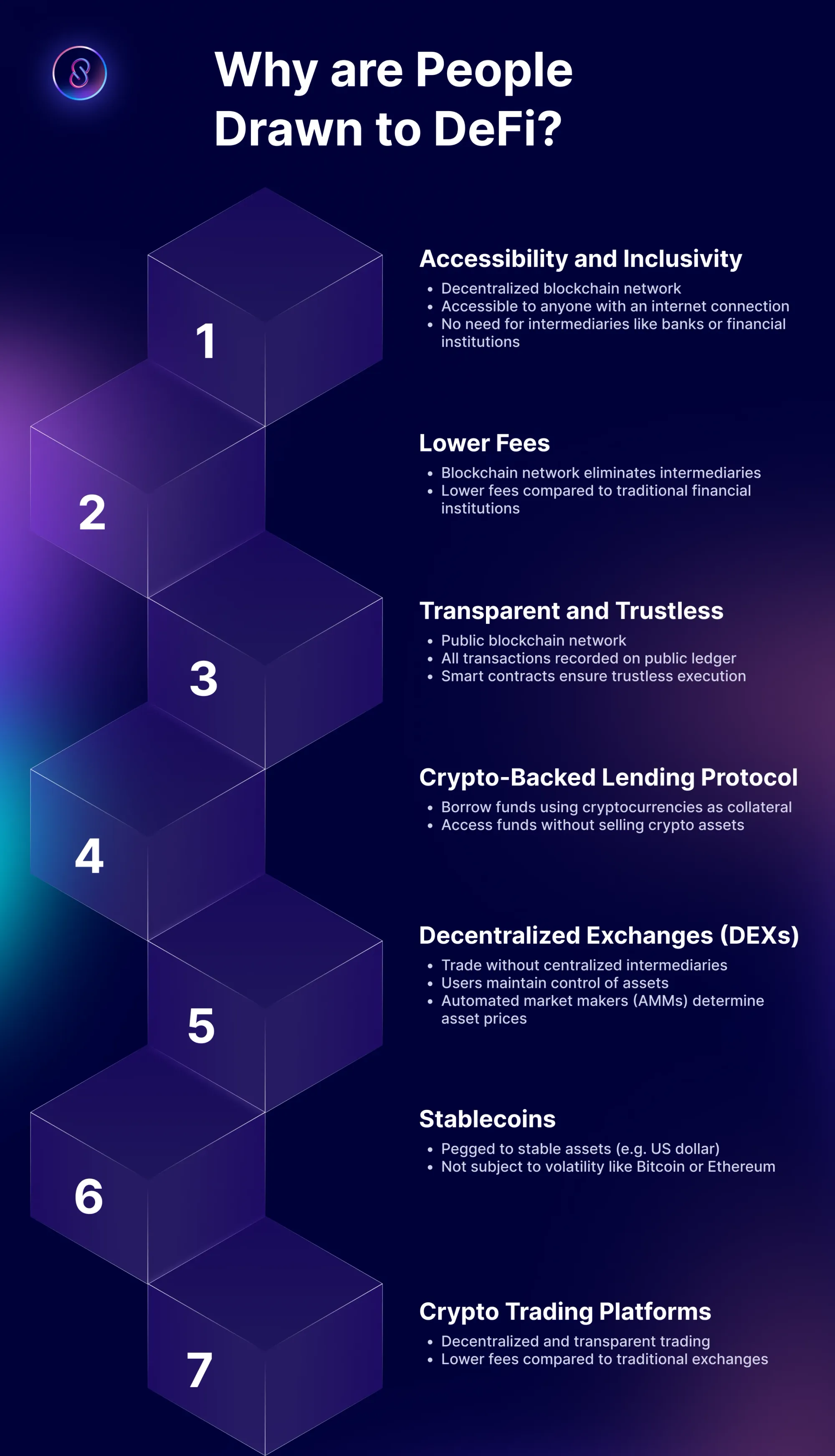
An Overview of the Different Types of DeFi Protocols & Platforms
One of the most popular decentralized lending protocols is Aave. Aave allows users to lend and borrow a wide variety of cryptocurrencies, including Ethereum, Bitcoin, and stablecoins. Aave also offers a unique feature called "flash loans," which allow users to borrow funds without the need for collateral, as long as the loan is repaid within the same transaction.
Another popular decentralized lending protocol is Compound. Compound allows users to lend and borrow a limited selection of cryptocurrencies, including Ethereum, Bitcoin, and stablecoins. Compound also offers a unique feature called "cTokens," which are tokens that represent a user's share of a specific lending pool. Users can trade cTokens on decentralized exchanges or use them as collateral to borrow other cryptocurrencies.
Crypto-Asset Management Protocols
Crypto-asset management protocols are another type of DeFi protocol that allows users to manage their cryptocurrency portfolios in a decentralized and automated manner. These protocols use algorithms to rebalance portfolios based on market conditions, without the need for human intervention.
One popular crypto-asset management protocol is Balancer. Balancer allows users to create customized cryptocurrency portfolios, which can consist of up to eight different tokens. Balancer uses an algorithm to rebalance portfolios based on market conditions, ensuring that the portfolio remains diversified and optimized for maximum returns.
Another popular crypto-asset management protocol is Yearn Finance. Yearn Finance offers a suite of products that automate cryptocurrency trading and investment strategies. Yearn Finance's flagship product is a yield aggregator, which automatically invests user funds in the highest-yielding DeFi protocols.
Decentralized Exchange Protocols
Decentralized exchange protocols are another popular type of DeFi protocol. They allow users to trade cryptocurrencies without the need for a centralized intermediary. Decentralized exchanges use smart contracts to execute trades automatically, without the need for a middleman.
Read more about Our next-generation InfinitySwap DEX
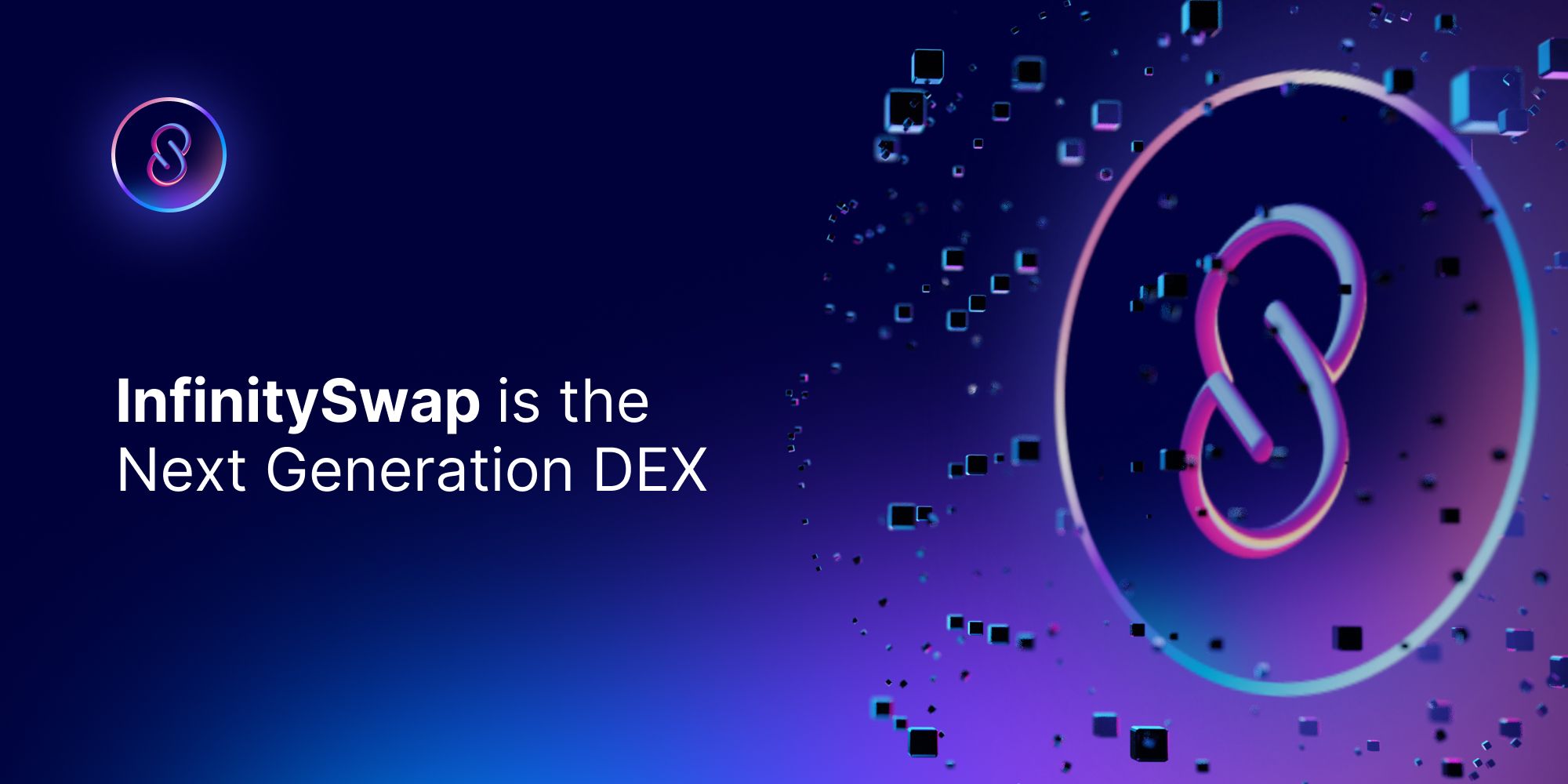
Another decentralized exchange protocols is Uniswap. Uniswap allows users to trade a wide variety of cryptocurrencies, including Ethereum and ERC-20 tokens. Uniswap uses an automated market maker (AMM) model, which sets prices based on the ratio of tokens in a liquidity pool. Users can also add liquidity to Uniswap pools and earn fees on trades.
SushiSwap is another popular DEX. SushiSwap is similar to Uniswap but offers additional features such as yield farming and staking. Users can earn rewards in the form of SUSHI tokens by providing liquidity to SushiSwap pools or by staking their SUSHI tokens.
Understanding the Risk Factors When Investing in DeFi
Decentralized Finance (DeFi) has emerged as a rapidly growing sector in the blockchain industry, providing a new era of financial services, transparency and accessibility. However, like any other investment, investing in DeFi platforms has its own set of risks. This article aims to provide investors with an understanding of the key considerations and risk factors they should consider when investing in DeFi platforms.
Smart Contract Vulnerabilities and Bugs in Protocols
Smart contracts are the building blocks of DeFi protocols. They are self-executing contracts with the terms of the agreement between buyer and seller being directly written into lines of code. One of the biggest risks associated with investing in DeFi platforms is the vulnerability of smart contracts to bugs and hacks. Even a small bug or error in a smart contract can result in massive losses for investors.
To mitigate the risk of smart contract vulnerabilities and bugs, investors should conduct extensive research on the protocol and the smart contract code before investing. Investors should also look for platforms that have undergone multiple security audits from reputable third-party auditors.
Liquidity Issues with Tokens on Exchanges
Liquidity is an important consideration when investing in DeFi platforms. Liquidity refers to the ability to buy or sell an asset at a price that is close to its market value. One of the main risks associated with investing in DeFi platforms is the liquidity risk associated with the tokens on exchanges.
Some DeFi platforms may have low liquidity, which can make it difficult for investors to buy or sell tokens at a fair price. This can lead to price manipulation and significant losses for investors.
To mitigate the risk of liquidity issues, investors should carefully research the platform and the token's market cap and trading volume. They should also consider investing in platforms that have established partnerships with reputable liquidity providers or have a robust liquidity pool.
Regulatory Risks
The regulatory landscape surrounding DeFi is still evolving, and regulations can vary from country to country. This uncertainty can create significant risks for investors, as the regulations can change rapidly and without warning. There is also a risk that some DeFi platforms may operate outside of regulatory guidelines and face legal action.
To mitigate the regulatory risks associated with investing in DeFi, investors should carefully research the regulatory landscape in their country and the countries where the platform operates. They should also consider investing in platforms that have established partnerships with regulated entities or have obtained regulatory licenses.
Market Volatility
DeFi platforms are highly volatile, and their prices can fluctuate rapidly in response to market conditions. This volatility can lead to significant losses for investors, especially those who invest a large portion of their portfolio in DeFi platforms.
To mitigate the risk of market volatility, investors should diversify their portfolios and avoid investing a significant portion of their portfolio in a single DeFi platform.
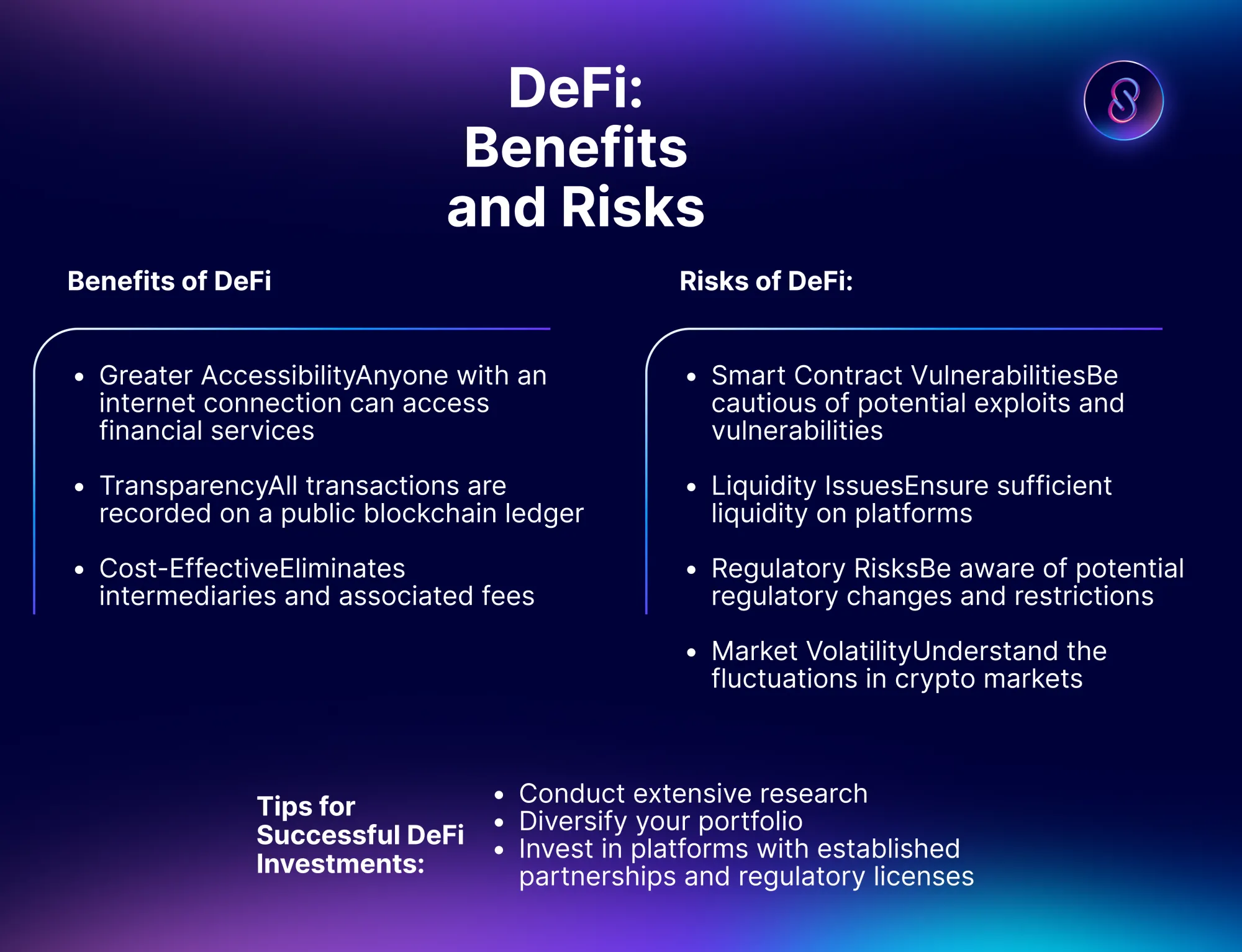
How to Get Started with DeFi
In this tutorial, we will provide you with a step-by-step guide on how to get started with DeFi.
Step 1: Choose a DeFi Platform
The first step in getting started with DeFi is to choose a DeFi platform. There are several DeFi platforms available, each offering unique features and benefits. Some popular DeFi platforms include:
InfinitySwap Compound
Aave
Uniswap
Yearn.Finance
MakerDAO
Research each platform and choose the one that best fits your needs and goals.
Step 2: Set Up a Wallet
Once you have chosen a DeFi platform, you will need to set up a wallet. A wallet is a digital storage device that holds your cryptocurrencies. There are several types of wallets available, including hardware wallets, software wallets, and online wallets. It is important to choose a wallet that is secure and reliable.
Take a look at the most popular Bitfinity wallet
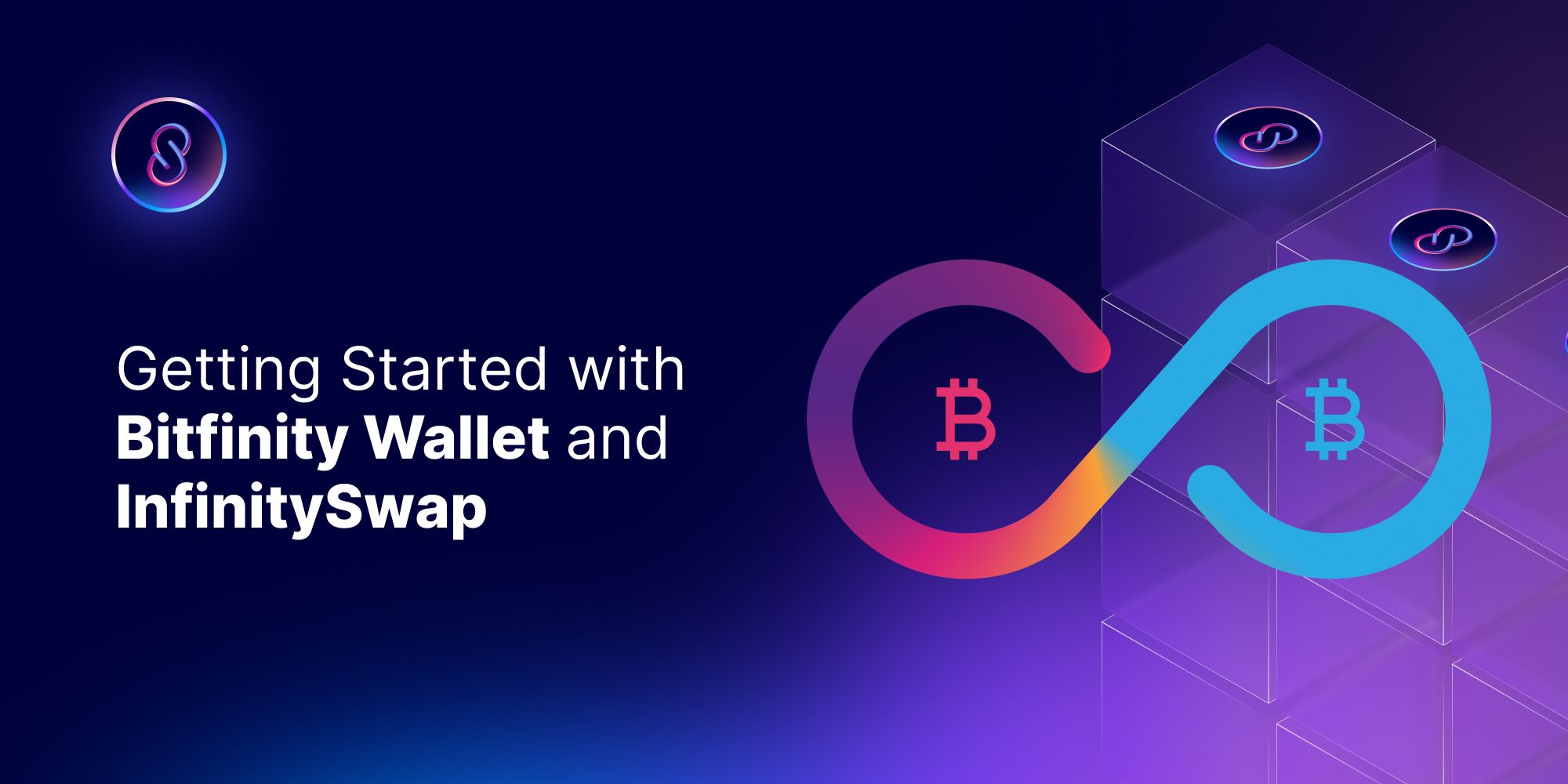
Step 3: Fund Your Wallet
The next step is to fund your wallet. To do this, you will need to purchase cryptocurrencies such as Bitcoin, ICP, or Ethereum from a cryptocurrency exchange. Once you have purchased the cryptocurrencies, you can transfer them to your wallet.
Step 4: Connect Your Wallet to the DeFi Platform
After funding your wallet, the next step is to connect your wallet to the DeFi platform. To do this, you will need to follow the platform's instructions for connecting your wallet. This typically involves selecting your wallet provider and entering your wallet address.
Step 5: Explore the DeFi Platform
Once you have connected your wallet to the DeFi platform, you can begin exploring the platform's features and functionalities. DeFi platforms offer a wide range of services, including borrowing and lending, trading, and yield farming. Take some time to familiarize yourself with the platform's offerings and learn how to use its features.
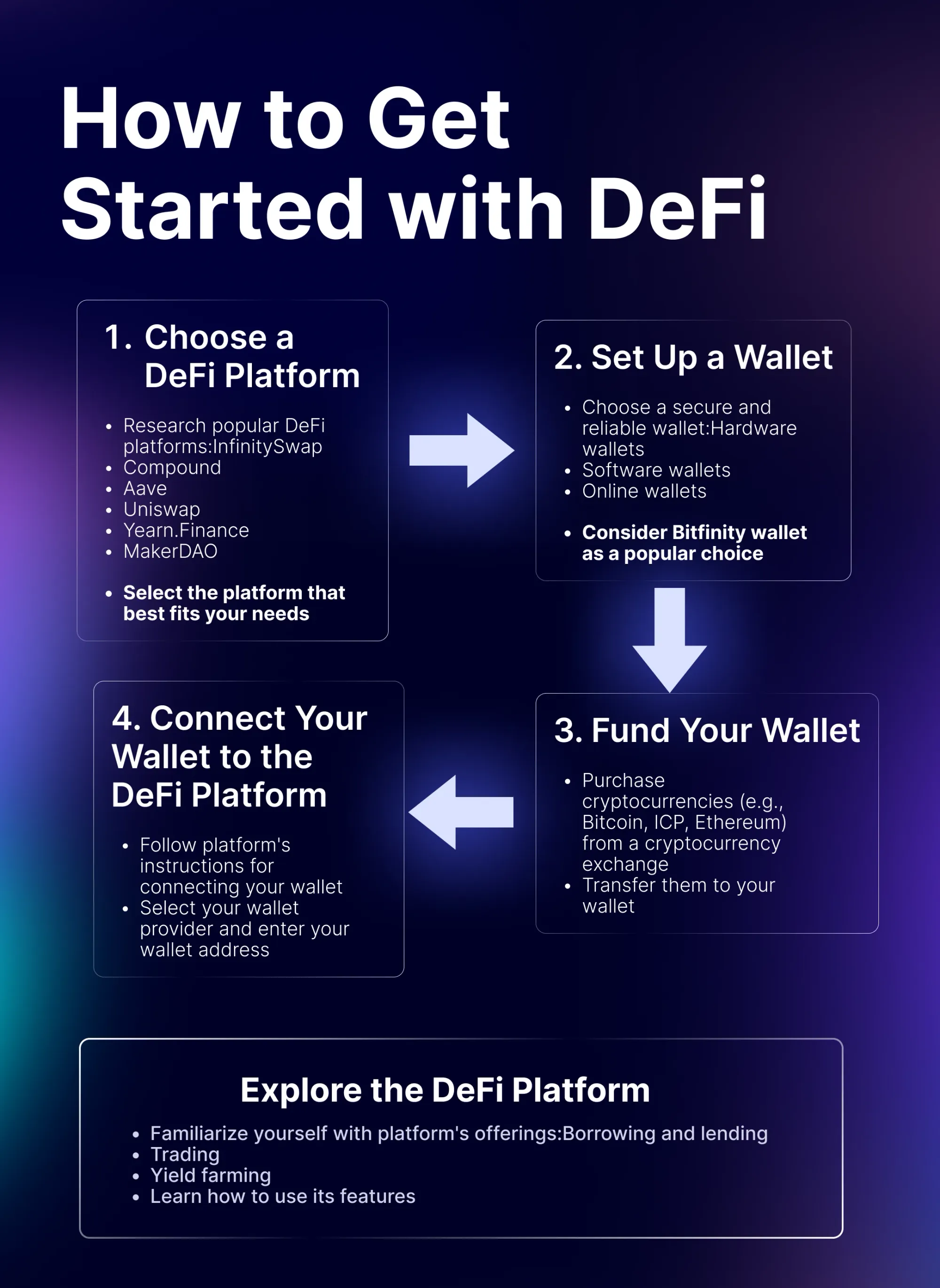
Conclusion
DeFi has emerged as a promising sector in the blockchain industry, offering a new era of financial services and accessibility. The benefits of DeFi are numerous. Firstly, DeFi applications offer greater accessibility, as they allow anyone with an internet connection to access financial services. Secondly, DeFi is more transparent than traditional finance, as all transactions are recorded on a public blockchain ledger that can be audited by anyone. Thirdly, DeFi applications are often more cost-effective than traditional finance, as they eliminate the need for intermediaries and associated fees.
However, investing in DeFi platforms comes with its own set of risks. Investors should carefully consider the risks associated with smart contract vulnerabilities, liquidity issues, regulatory risks, and market volatility before investing in any DeFi platform. Conducting extensive research, diversifying their portfolio, and investing in platforms with established partnerships and regulatory licenses can help mitigate these risks and lead to successful DeFi investments.

Connect with InfinitySwap
Bitfinity Wallet |AMM | Twitter | Website | Telegram | Discord | Github




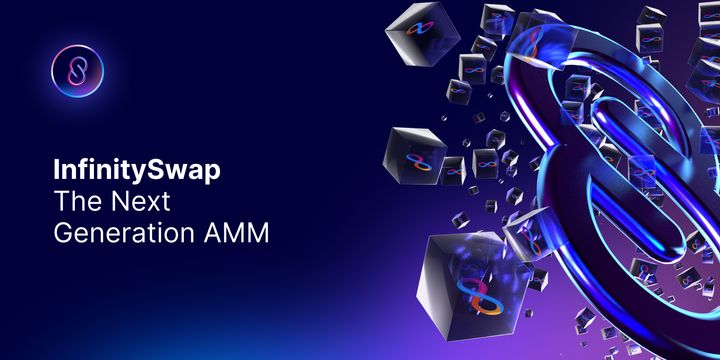


Comments ()